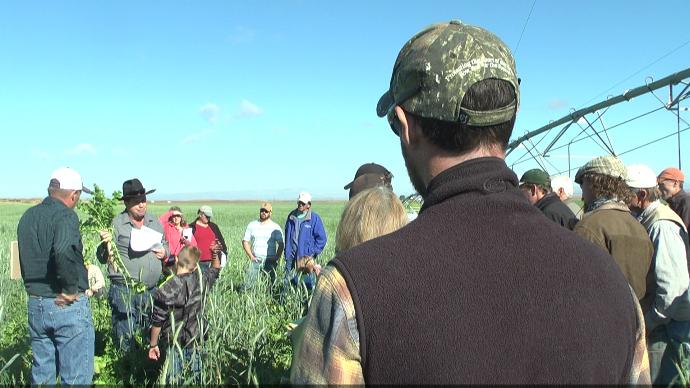
Local Farmers Take a Look at the Benefits of Cover Crops
JEROME, Id. (KMVT-KSVT) Agriculture drives the economy of Southern Idaho, and making sure the soil is healthy is the number one priority for local farmers.
While years and years of fertilizer and deep tilling have worked, those practices do nothing to produce healthy soil.
Now local farmers are trying something new.
"Change is tough in agriculture. Because we can't handle to much risk," said Marlon Winger, Regional Soil Health Specialist.
Change is tough, but so is having soil that won't support your crops.
October 21, 2015 | Source: KMVT | by Joey Martin
JEROME, Id. (KMVT-KSVT) Agriculture drives the economy of Southern Idaho, and making sure the soil is healthy is the number one priority for local farmers.
While years and years of fertilizer and deep tilling have worked, those practices do nothing to produce healthy soil.
Now local farmers are trying something new.
“Change is tough in agriculture. Because we can’t handle to much risk,” said Marlon Winger, Regional Soil Health Specialist.
Change is tough, but so is having soil that won’t support your crops.
Since the end of World War 2, the practice of using cover crops has almost vanished.
Now, local farmers in Southern Idaho are once again starting to realize the benefits.
“It’s a plant or vegetation that we don’t normally harvest. But it’s used to benefit the soil and provide that organic matter and provides nutrients for the next crop,” said Patti Hurley, District Conservationist.
The North Side Soil and Water Conservation District sponsored a cover crop workshop in Jerome County on Wednesday.
Marlon Winger was the main speaker at workshop.
He explains how it’s not just cover crops that are making an impact on soil health, it’s a combination of cover crops and no tilling.
“Now that farmers understand the importance of cover crops and how they help the soil to function and as they come to soil health workshops they start to understand how soil disturbance plays a role in destroying or building soil aggregate,” said Winger.
Using cover crops and practicing no tillage both have proven to increase the overall health of soil on the farm, but getting farmers to actually adopt these practices have been proven difficult.
That’s where the new generation of framers come in.
“The hard part is were very high producing row crop producers and it’s kind of hard to transition from what they’ve done – tilling for 30 years to going in and planting cover crops and discing it under or grazing it,” said local farmer, Nathan Garner.
With more and more information on the benefits of planting a cover crop coming out, the new generation of farmers feel optimistic this way farming could be common practice in the near future.
